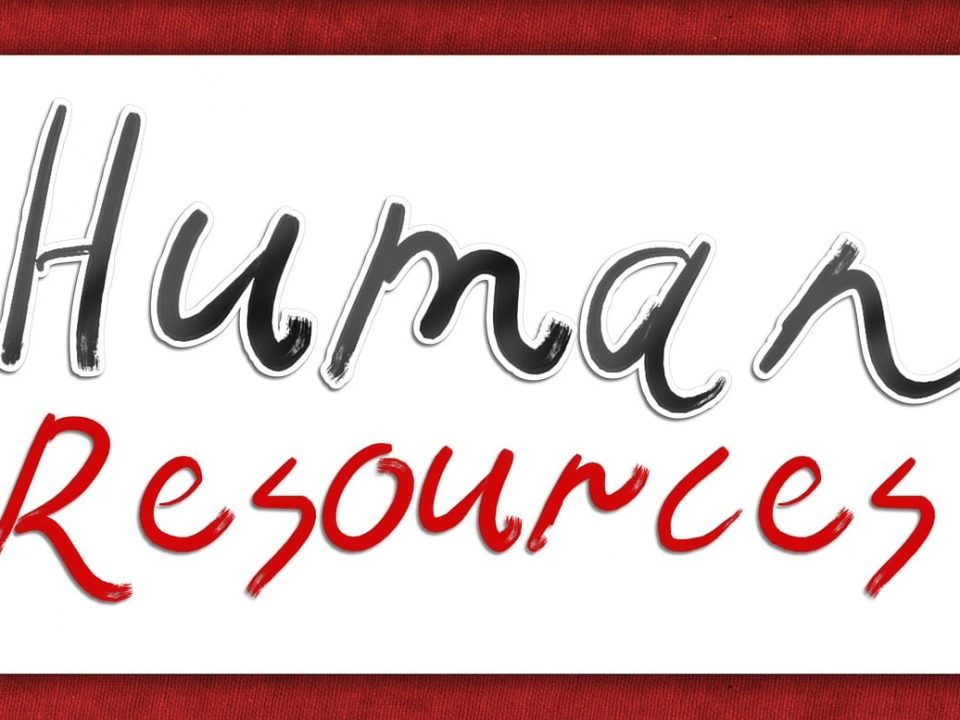Introduction to drug classification and its regulation in the UK

Question: Provide an introduction to drug classification. How are drugs classified? What is the connection between the Nursing and Midwifery Council and drugs?
Learning outcomes
At the close of the introduction to drug classificationchapter, we aspire to make you aware of the following points:
• The reason behind drugs having a generic, chemical, and trade name
• The implications of the names
• The classification of the drugs and their application
• The regulation of drugs in the UK by law and by the Nursing and Midwifery Council
• The understanding of drug classification helps in patient safety and nursing practice
• The need to take special care concerning certain types of drugs, specifically when prescribed for pregnant and breastfeeding women
The naming of the drug: Introduction to drug classification
Drugs are always sold under a specific name which can be its generic, chemical, or trade name. The trade name of a drug is written in uppercase, whereas its generic and chemical names are written in regular sentence cases.In this chapter, introduction to drug classification, we would like to inform you that the primary reason behind selling a drug under its trade name is because of the cost involved in developing it, testing it through trials between preclinical and clinical stages, introducing it in the market, involves a lot of expenses (BNF, 1999b). Safeguarding the drug’s production during its initial years of usage, the company can recover the cost involved in the development, production and selling of the drug by giving it a specific trade name.After that, other competitors can manufacture the same drug under different trade names or generic names, making the drug available at lower prices.In this introduction to drug classificationchapter, we could see that the setup ensures that the manufacturing company can get the financial benefit of selling the drug under a trading name. Then the other companies help control the drug’s price by manufacturing the same drugs under different names.
Classification of drugs
In this chapter, introduction to drug classification, we would like to inform you that drugs are primarily classified by their chemical family or therapeutic/physiological effect.
Drugs used for medicinal purposes are classified as prescription or non-prescription drugs or over-the-counter drugs (OTC).The non-prescription drugs are used for common illnesses and have lower dosages than those prescribed by a medical practitioner (Henry et al., 2013).OTC drugs are usually safe when used appropriately, and their monitoring is not required to be regulated by medical professionals.Meanwhile, prescription drugs are administered to the patients on the instruction of the medical practitioners. These drugs are for significant ailments the healthcare professional prescribes after making a diagnostic decision.
In this chapter, introduction to drug classification, we would like to inform you that family or physiological effect is another way to classify drugs.Two specific ways in which the drugs can be described are presented in table 1.The drug’s effect can be physiological, affecting the body’s system, or therapeutic, which has a medicinal effect (Neil et al., 2016). For instance, the therapeutic action of the drug citalopram is an antidepressant, whereas selective serotonin-reuptake inhibitor (SSRI) is the physiological effect of the drug. Often, we could find an overlap amidst the drug classification systems.
Role of Nursing and Midwifery Council in drug administration
When administered incorrectly, drugs may harm the patients or even cause death. So, careful regulation of drugs during their administration is a must to avoid any unfortunate happening.The regulation of drugs in the UK is performed by the legislations and policies framed by the government, along with some professional bodies like the Nursing and Midwifery Council (NMC), representing different healthcare professionals. In this chapter, introduction to drug classification we would like to inform you that these professional bodies have their own guidelines for administering drugs. For instance, guidelines related to drug administration for nurses are given by NMC. The nurses are supposed to follow the NMC Standards for Medicine Management.Along with explaining safe and effective drug administration practices, the guidelines motivate nurses to observe local and national regulations for drug administration (NMC, 2020).
Controlled and non-controlled drugs
In this part of the introduction to drug classification chapter, we will discuss the controlled and non-controlled drugs.To administer a controlled drug, the healthcare professional needs to take significant care as the drugs can cause harm to the patients. Such drugs, if taken inappropriately, can cause potential abuse to the person being administered. Harm can cause psychological or mental damage or make the person psychologically or physiologically dependent. The abuse of controlled drugs may also have severe effects on society.In this chapter, introduction to drug classification, we would like to inform you that procedures and policies have been developed and enforced to restrict the usage of drugs for the safety of the patients, society and healthcare professionals.The instructions laid down for the usage of the drug cover every step taken for the drug, beginning from its inception to disposal on its expiry.
Misuse of Drugs Act 1971 lays down guidelines on controlled drugs and their possibility to produce harm when abused.The act also classifies prescription drugs with no medicinal use, like lysergide.Addiction to certain types of medicine is another form of harm caused to patients; therefore, The Royal College of General Practitioners (RCGP) identifies the liability of prescribers to think about this form of harm before prescribing it to the patients. But it should be noted in this chapter, introduction to drug classification, that though there are certain drugs like morphine whose clinical requirement as a controlled drug is indicated, National Institute for Health and Care Excellence ( NICE) does not recommend for its controlling. Morphine is used by cancer-affected patients during their palliative care when experiencing pain, and if there is a restriction on its administration, then it may make the patients dependent (NICE, 2019). Here, the risk of making the patient dependent overshadows the requirement to control the patient’s pain.
Drug classification basis probable risk to patient’s health
Almost all drugs can potentially hurt the patient’s health. These effects are generally recognized during the development of the drug and its clinical stages. In the UK, it is identified by the Yellow Card Reporting System supervised by the Medicines and Healthcare Products Regulatory Agency (MHRA). The harmful effects may be directly related to the drug or the adverse effects of it when taken in combination with other drugs.In this chapter, introduction to drug classification, we would like to inform you that the drugs can also have an adverse effect when administered with any vaccine or herbal medicines. The harmful effect of the drugs can be minor to severe depending upon their composition.Moreover, certain drugs can cause illnesses like cardiac dysfunction after being administered to a patient. Therefore, the prescribers must understand the adverse effects of the drug before prescribing it to their patients.They must evaluate the potential harm the drug may cause the patient compared to the likely benefits (RCGP, 2020). In this chapter, introduction to drug classification, we would like to inform you that before recommending to the patients, it is the prescriber’s responsibility to notify them about the likely health risks. Suppose the medical team considers the drug the last option to treat the patient or considers it useful for the patient. In that case, it should get informed consent from the patient or his family before administration.Trastuzumab is one such drug that is administered incertain types of cancer and has the potential to cause congestive heart failure.
Looking at the effectiveness of the drug Trastuzumab, it is still recommended as a prescribed medicine for treating HER2-positive breast cancer. However, NICE recommends carefully monitoring the patients and stopping treatment in case of cardiac toxicity.In this chapter, introduction to drug classification, we would like to inform you that to handle the risk of cytotoxic drugs to patients, drugs with this effect must be handled carefully.For instance, drugs classified as cytotoxic must be made by trained persons and in allocated pharmaceutical premises(NICE, 2019). Healthcare professionals managing these drugs must sport protective gear such as masks, gloves, PPE kits, etc. In addition, they should adhere to the internal procedures concerned with spillage and disposal.
Drug classification can also occur by the likely risk they can cause when administered to a pregnant lady.Diethylstilbestrol is one such drug that can give rise to congenital malformation when given to a pregnant lady during the first trimester. Likewise, other drugs can affect the fetus’s growth when administered during the second or third trimester.In this chapter, introduction to drug classification, we would like to inform you that such drugs may also be associated with congenital deformities such as heart defects, cleft palate, and low weight during birth, etc. Though, the evidence of such adverse effects is not highlighted much. Many drugs are not considered harmful when administered to pregnant women, but it is hard to categorize them as safe for these women. Ethical consideration does not allow using pregnant women during a clinical trial of any drug. Hence, determining the effect of any particular drug is possible only when the drug is administered to them.Usually, healthcare professionals are recommended to administer such drugs only when their benefits overshadow the likely risk to the fetus.In this chapter, introduction to drug classification, we would like to inform you that evidence collected from animal studies of teratogenicity or reported samples of teratogenicity in humans can help evaluate the risk of medicines.
Similar concerns are raised when a healthcare professional prescribes medicine for breastfeeding women.In this chapter, introduction to drug classification, we would like to inform you that there is always a likelihood of the drug entering the breast milk and then passing on to the baby. Nevertheless, the likely risk from these drugs relies on their pharmacokinetics, the rate of absorption, the rate of elimination by both mother and the baby, and the probable effects of the drug on the baby. British National Formulary (BNF) in the UK initially recommended a table classifying the probable adverse effects of certain drugs in pregnant women. Still, certain editions have been made in the table (BNF, 1999a). Now the table suggests certain drugs useful during pregnancy or breastfeeding. The instruction of weighing the possible risks compared to possible benefits before prescribing any drug is mentioned under each category of drugs.In this chapter, introduction to drug classification, we would like to inform you that the manufacturing units of such drugs may also recommend their administration for pregnant or breastfeeding women.
Significance of drug classification for nurses
Nurses must recognize and remember how drugs are classified and given a particular name.In this chapter, introduction to drug classification, we would like to inform you that many similar drugs may confuse nurses and cause medication errors.The errors may affect patient safety depending on the type of drug administered.For instance, Lamictal is the trade name for the antiepileptic drug lamotrigine, which sounds fairly similar to Lamisil, a typical antifungal agent(Souland Richard, 2020). Hence, nurses should familiarize themselves with both the trade name and generic name of all the drugs.In this chapter, introduction to drug classification, we would like to inform you that they must regularly recheck all the names and make themselves aware of the new drugs added to the system. Most medical practitioners write handwritten prescriptions, so unclear writing or misspelling could lead to confusion. But it is the legal, moral and ethical duty of a nurse administering the drug to the patient to check and ensure that the drug being given is correct. In case of any confusion, the nurse administering the drug must inquire from the senior medical practitioner before giving it to the patient. Subsequently, the nurse should also think about any particular risk that a specific patient category can face while being administered any prescribed drug. For instance,considering the effect of the prescribed medicine on a pregnant woman or verifying whether the woman is pregnant have been considered while writing the prescription.However, raising a question on the decision of the prescribing doctor may not be good for the nurse, but not raising it may also lead to adverse effects if the doctor was unaware of the fact while writing the prescription. In this chapter, introduction to drug classification, we would like to inform you that the nurse can raise the question in a polite and respectful manner and should not be negative or commanding in any circumstance (Souland Richard, 2020).
Conclusion
Classification of drugs is an essential concept for nurses to understand. It is vital to note all the risks after administering a drug to the patient. Classification of drugs is also vital to take informed consent from the patient being given the drug for their treatment.Awareness about the naming and classification of the drugs can help understand the reason behind verifying the drug basis its generic name instead of trade name.You must also understand how mixing trade names can lead to medication errors.The chapter, introduction to drug classification, will help the interns and medical practitioners to recognize prescribing errors made in the profession. Identifying the prescribing errors can help ensure the safety of the patients and enhance the quality of care being provided to them.With this introduction to drug classification chapter, we hope that you must have understood the reason behind classifying controlled drugs in a specific way compared to non-controlled drugs.You must have also gained knowledge about a specific set of patients on whom a certain set of drugs cannot be administered and the probable risks it may cause to the patient if administered.
References
BNF (1999a). NICE: Cytotoxic Drugs. Available at: http://www.real.nhs.uk/formulary/bnf/prsesent/10-severe-disease-and-suppression.
BNF (1999b). Opposite Reactions to medicines. Available at: https://www.real.nhs.uk/formulary/bnf/ present / prescribing/opposite-reactions-to-medicines.
Henry, K., Role, O. and Sean, K (2013). Impact of ibuprofen, naproxen, and piroxicam on pregnant women: a prospective study. BMJ, 120 (6), p.910-959.
Neil, A., Steffi, H., Roy, A. and Blake, M. (2016). Main cost leaders of pharmaceutical clinical trials in the UK. Medicinal Trials, 120 (6), pp.210-226.
NICE. (2019). Technology Advanced Guidelines TA106: Trastuzumab for treating HER2-. NICE. Available at: https://www.nice.org.uk/guidlines/ta106?2997535920169247211.
NMC.(2020). Rules for Medicine Handling. Nursing and Midwifery Council. Available at: http://nmc.org.uk/rules/supplement-standards/rules-for-medicine-handling.
RCGP. (2020). SubstanceMisuse and Connected Health. RCGP. Available at: http://smcgp.org.uk/ guidance013.pdf.
Soul, S. and Richard, I. M. (2020). Insight Therapy: Lamisil and Trastuzumab – the extreme handling of cardiotoxic side effects.Clinical Procedure.Oncology, 5 (8), pp.224-235.
Total Assignment Help
Incase, you are looking for an opportunity to work from home and earn big money. TotalAssignmenthelp Affiliate program is the best choice for you.
Do visit :https://www.totalassignment.com/affiliate-program for more details
Total Assignment help is an assignment help Online service available in 9 countries. Our local operations span across Australia, US, UK, South east Asia and the Middle East. With extensive experience in academic writing, Total assignment help has a strong track record delivering quality writing at a nominal price that meet the unique needs of students in our local markets.
We have specialized network of highly trained writers, who can provide best possible assignment help solution for all your needs. Next time you are looking for assignment help, make sure to give us a try.
Looking for Assignment Help from Top Experts ?
Get the best Assignment Help from leading experts from the field of academics with assured onetime, 100% plagiarism free and top Quality delivery.


